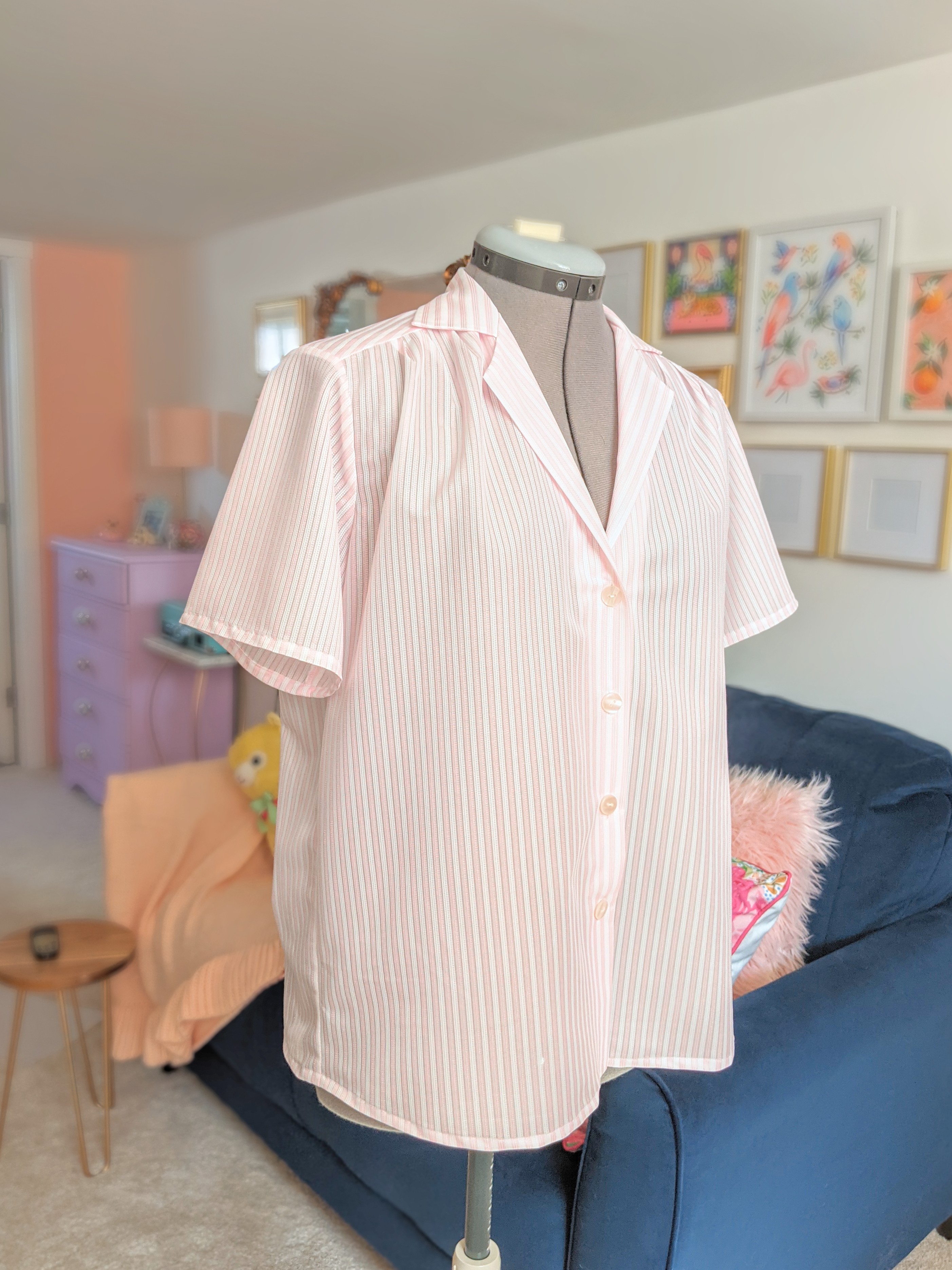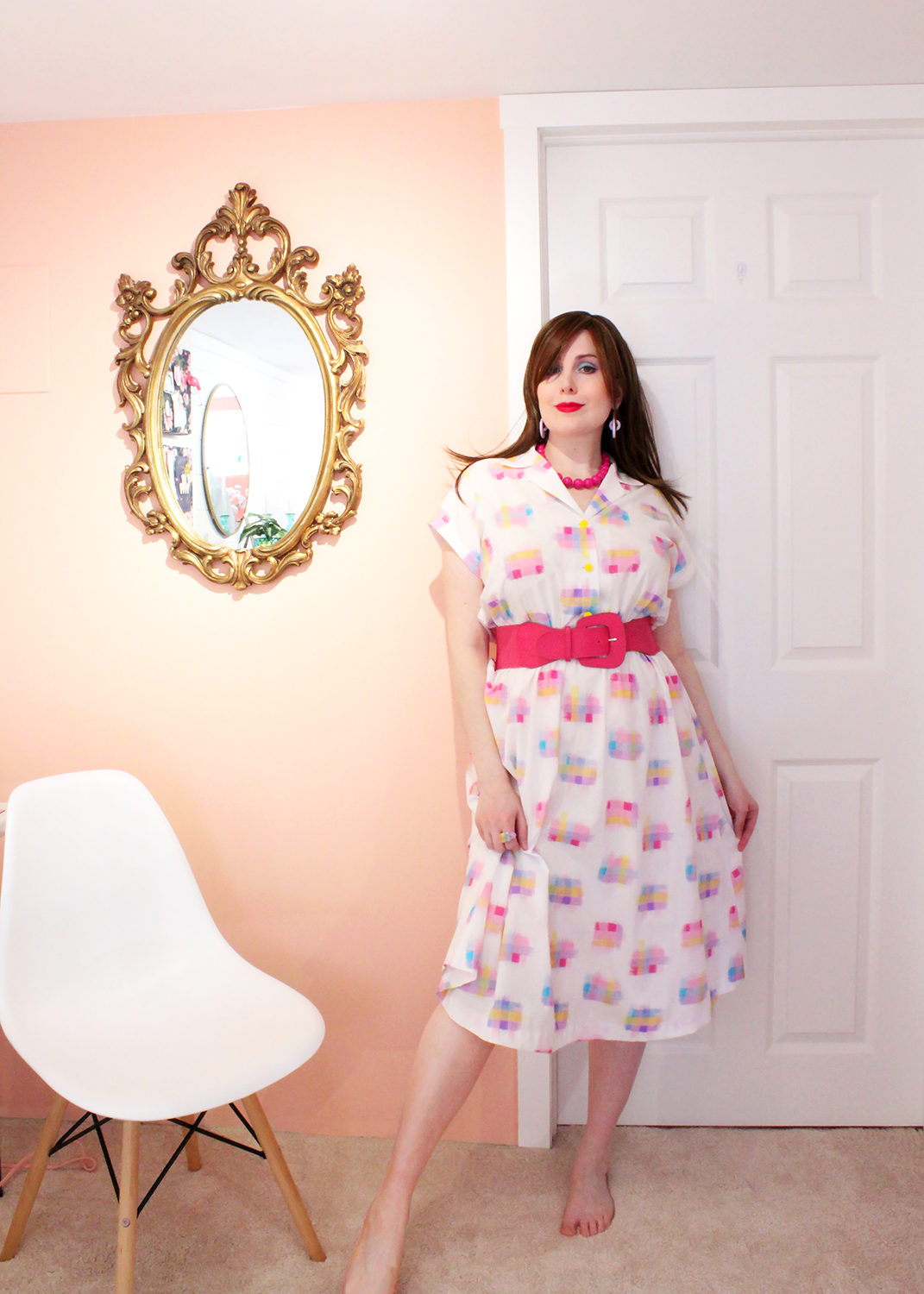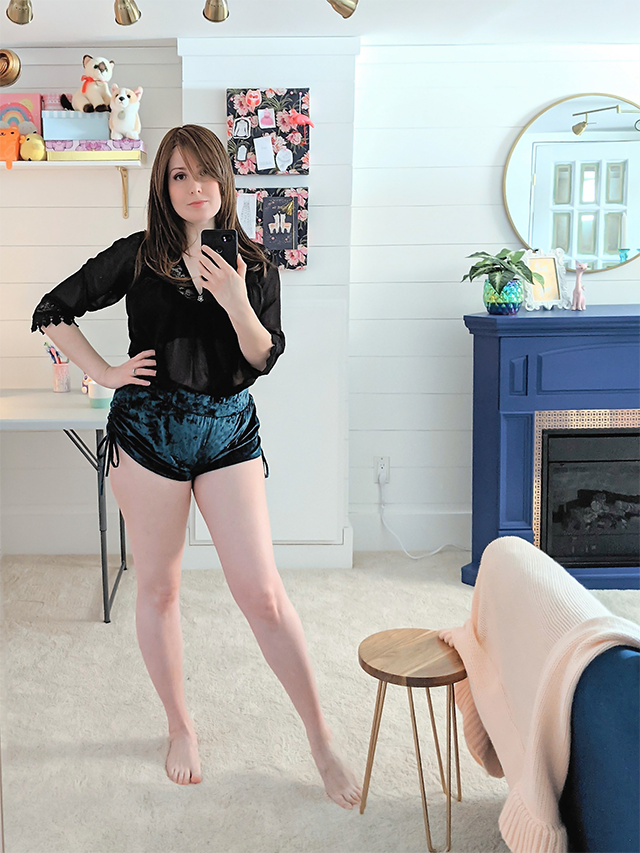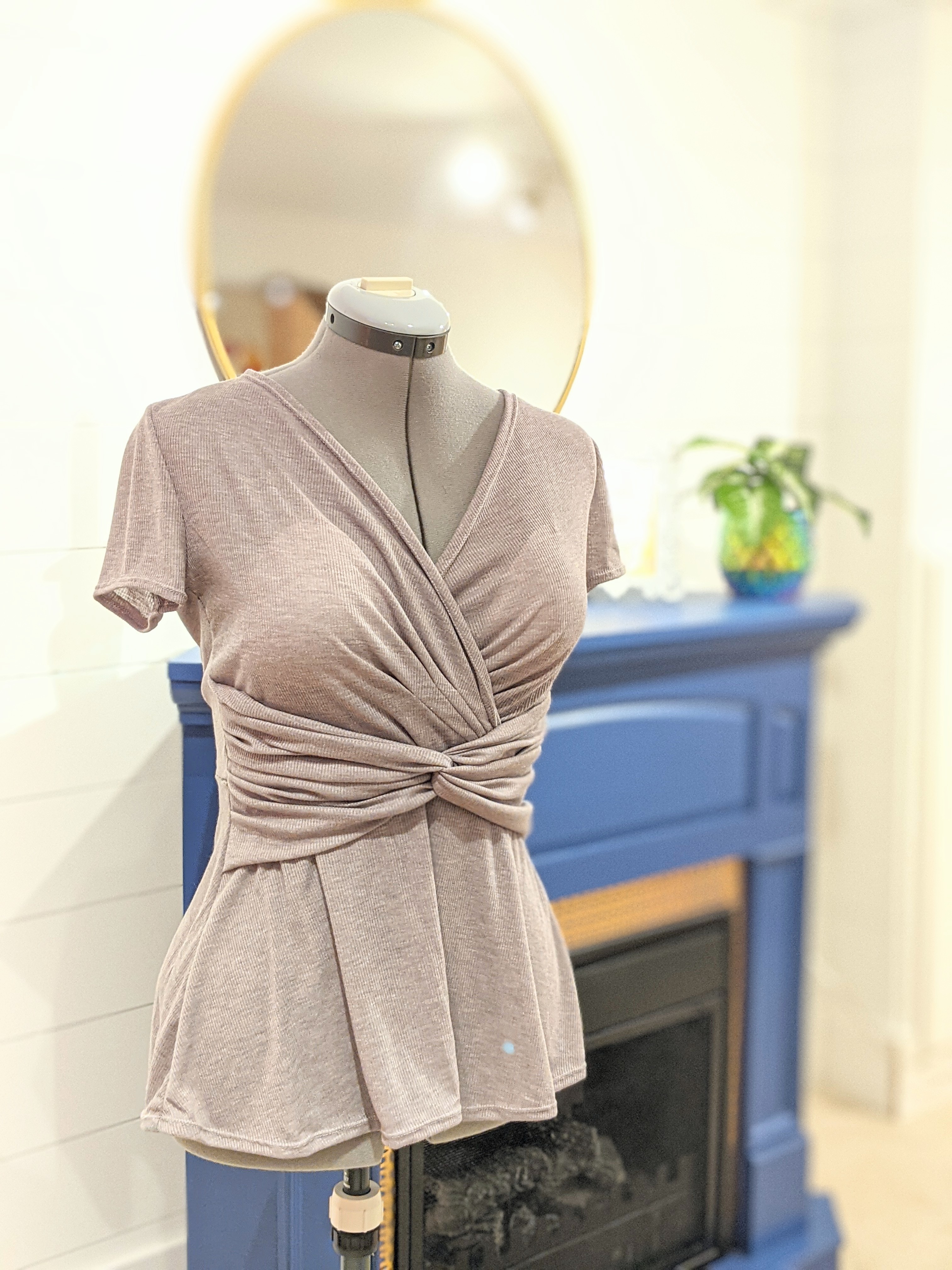Smocked Purse
Butterick 4496
1980's Blouse
It's finally spring! Soon my garden will bloom and sunny days await me...at least that's what I'm hoping for. I'm in dire need of some summer friendly separates and I know warmer weather is on the horizon. I've decided I'm going to keep running with the 80's theme for awhile (I've been bingeing 80's movies and I'm greatly anticipating my annual rewatch of Steel Magnolias for Easter). I would like to mix and match blouses and shorts for some quick wardrobe building. I don't own many 80's blouse patterns, but this Butterick 4496 has a glamorous and feminine quality to it and it's been on my "to sew" list for awhile now. I can imagine it in a luxurious silk charmeuse, if only I had some! But for this project I decided to use a sheer ribbon like material that's been in my stash for several years. It's deeply reminiscent of the 80's and looks smashing with red lipstick!
I thought this pattern was going to be a breezy sew but several things tripped me up in the process. For starters, the previous owner did an awful job cutting out the pieces. I mean large jagged edges like someone cut it out blind folded. As such, some information was lost. I couldn't tell where the notches were located, or whether some lines were curved or straight. I had to rely on my drafting knowledge to fill in the gaps. I know that my redrafted version isn't quite right, I think the yoke ended up wider than it was supposed to be, but thankfully those problems were easy to work out during the assembly of the garment. Unlike my previous endeavors, the flat pattern measurements in this garment were fairly close to my own size, with the exception of the bust. I utilized Threads Magazine Dartless Full Bust Adjustment tutorial which I'm pleased to say really works! Yes, it's true, the hemline lays straight when worn. I highly recommend this tutorial.
In the final project I decided to drop the angle of the lapel slightly to accommodate the new collar style (it was more curved before, probably in order to compliment the partial roll collar which has a roundness to it). Instead of gathering the bodice front and back into the yoke, I took the ease measurements and converted them into pleats and an open box pleat in the back. It looks much nicer. I had gathered the fabric when making the muslin, I found the effect was lacking, the pleats are more distinct and lay flat against the body.
I love the yoke on this shirt, it's lined. The collar is attached to the bodice first. Then the yoke is attached to the self facing of the lapels and pressed. Afterwards, the yoke is sandwiched with the collar and exterior yoke (right sides together) and sewn. The seam is trimmed and clipped, and the yoke turned inwards, encasing all raw edges inside the lining. It looks very neat and professional. The only drawback with the yoke is that it has to be slip stitched into place at both the shoulder and back yoke seams which is quite tedious. The results, however, are worth it!
Speaking of tedious, there is a lot of slip stitching in this pattern! The placket facing, the yoke seams, and the entire hem of the shirt is slip stitched into place. I decided against hand sewing the bodice hem and instead turned it under in a similar way to the sleeve hems. I also catch stitched the collar into place to keep it from rolling up - I learned this technique from one of my sewing text books, it worked like a charm.
One of the reasons I shy away from blouses is the buttonholes. I seem to be cursed with them. This was no exception, my buttonholes slipped under the specialty foot, so they're not perfect. It can't be helped now but next time I think I'll baste more before sewing them on my final project.
Overall I ended up with a fun, candy striped blouse that brings back fond memories of yester year, and I can't wait to pair it with my fave sunnies and my mom jeans!
Quick Tips:
Simplicity 7951
Misses' Dress (80's)
I had to make up assembly as I went along. Even without instructions it's fairly straight forward. I decided to bind the armholes with self made bias tape. I also chose to use a blind hem stitch to hem the skirt. I love this technique because it looks almost invisible and I find it's less likely to twist the hem on a rounded edge.
Simplicity 5110
Women's Shorts
Here's an OOP classic from the early 80's, Simplicity 5110. The pattern contains about four pairs of "one meter" shorts in different designs. I selected Vers. 3 which features a drawstring ruched side seam. This pattern was only available in single sizes, unlike most of today's patterns which allow you to choose from several sizes. As usual this pattern was four sizes too small for me and I had to add about four inches overall to get it fitting correctly.I created my muslin (not pictured) using a cotton plaid. The muslin turned out ok, it was easy to assemble and it used very little material. The shorts are high waisted so they have a tendency to ride up the bum and crotch. I'm not sure if this is a fit issue? It seems like all shorts get vacuumed into my butt crack. I have a hungry bum.
Burda Style 7082
Wrap Style Dress with Knotted Midriff
The Bad:
It's probably best to start with the things I didn't like about the pattern. For the sake of ease I'm going to bullet list them:- The size chart is printed directly to the pattern paper and is nowhere on the envelope or instruction booklet. - This is such BS, all the other major pattern companies print it on the envelope or booklet. Imagine having to open the entire pattern in search of the size chart just to figure out what size you are and how much material you'll need. Maybe they've changed this in the last decade, one can only hope!
- There is no stretch ratio gauge. The only recommended fabric is Jersey. I find that funny because I don't have access to fancy fabric boutiques, all I have is Fabricland and Len's Mills and Jersey only shows up sporadically depending on the year and the season. A stretch gauge would help me select an appropriate alternative and allow me to determine the stretch ratio for future reference.
- There are no bust points or waist line adjustment markings on the pattern itself. Go figure, they put all that other crap on the pattern paper but not the things you wish you had.
- After sewing the gathers at the bust I found there was far too much material at the waistline seam which caused the seamline to look misshapen. The bust darts/gathers don't lay across my bust correctly, they look odd. This lead me to apply the midriff by hand and direct the gathers according to my shape and not what the pattern indicated.
- The midriff has a raw edge! Weird, I suggest hemming it to give it a professional finish, as it is knit it would inevitably roll outward.
- It features a side zipper(!?) Take inventory of your closet, how many knit garments have zipper closures? Very, very few. And when they do exist they are almost always heavier weight knits with a lower stretch ratio. I nixed the zipper and sewed the seams as I normally would on knitwear, the stretch recovery allows this top to be a pullover. Zippers are fussy at the best of times, but side zippers, plus excess fabric in the side seam, plus it being knit fabric is a recipe for disaster.
The Good:
No bullet points required for the good as there weren't many things to praise here. There is a cool trick where the extension that acts as the self facing of the front bodice neckline is sewn directly into the shoulder seam and then turned so it sits flat. I loved that. I also don't mind the idea of the garment as a whole, it's just a shame it was so damn hard to get fitting correctly.
The Alterations:
There was a short waist alteration, a shoulder slope, an armscye adjustment at the back, the neckline was taken in several inches more using a slash and close technique, and I drafted a peplum instead of using the available skirt due to lack of material. I also hand gathered and applied the midriff to the bodice by hand. The top fits but only just, there's still excess at the neckline.After I did some research I discovered that women with longer torsos had better luck sewing this pattern from the envelope whereas those of us with short waists and typically large breasts really struggled to fit this pattern to our bodies. It must not be as easy as simply removing length, I wonder if I was supposed to decrease the pleats and gathers and change their position. I'm not so accomplished that I know how to fix these problems, but if I do return to this pattern I will try playing with the neckline shape and gathers.
Advice:
Don't install a zipper. Use flat pattern measurements to determine whether the neckline and other parts of the bodice will fit you. You can apply these measurements to the fabric and test them against your body; for example if I measured the neckline as 15" I would try to match the placement of the neckline grain on my fabric and hold that measurement across my chest, checking for stretch and fit. No cutting necessary! All we want to see is if 15" inches of fabric on grain fits or not when draped across the bust from the shoulder point to the supposed waistline seam. Make sense? It's a quick and dirty way to discover whether or not there are fit discrepancies with the negative ease. Experiment with the gathers before finalizing them, meaning you need to baste, baste and baste!I might return to this dress pattern but I'm pretty burnt by it. Sometimes patterns are like toxic friendships, you might need distance to see them for what they are!
Introduction
HELLO!
I can't believe I'm starting another blog again. Maybe I'm bored or perhaps I've become too disillusioned with social media apps. I find connecting with other sewists has become increasingly difficult in an ever changing, yet startlingly stale online landscape. My Instagram reach is pretty much zero. I've been locked out of old accounts. Feeds aren't showing users that I actually want to see content from. It's dried up. And yet, here I am utilizing a form of social media that's even more petrified and neglected than Instagram! Why? Because I need to document my projects somewhere. Even if nobody sees them or gleans anything from my experiences, it's nice to have a voice, even when no one is around to hear it. So much has changed over the pandemic. I have my studio space back. I suffered losses. I had some gains. I grew up. I wear alt clothing but not like I used to. I'm changing and I'm learning new things about myself. I'm ready to welcome another chapter of my life. I won't be sharing the more intimate side of things. I've read that's not what blogging is for any more. Apparently blogs are better served as resources, so that's what this blog will be: a resource for pattern reviews, adaptations, drafting and sewing tips. I want it simple and sweet, and who knows, maybe that will be just enough to keep it going for a little while!
It's nice to meet you!






.jpg)












